Table of contents
Raspberries ( Rubus idaeus ) are popular because of their fruity taste and can be used in many ways in the kitchen.
Use in the kitchen:
Raspberries are an extremely healthy, raw snack and a popular ingredient in many recipes. They are used fresh in fruit salads, hearty salads, desserts such as raspberry dream or raspberry tiramisu, muesli, smoothies, shakes, raw cold dishes, fruit pulp (fruit puree), pastry fillings, cakes, Swiss roll fillings and pralines, as well as cake toppings or for preparing a raw cake .
Raspberries are popular for making jam, jelly, compote, red fruit compote, juice, syrup, ice cream or parfait. The fruits are also suitable for flavoring vinegar or for baking, e.g. for muffins .
The small shoots of the raspberry bush, which can be up to 2 mm long, are an aromatic treat with a coconut-like taste in spring. The blunt-aromatic, apple-like leaves can be dried and used to make tasty teas. If the leaves are fermented, they are reminiscent of black tea. 1
Raspberries are a component of the gluten-free and raw vegan Erb-Müesli . In addition to other berries, energy-giving bananas, vitamin C-rich citrus fruits and fiber-rich apples, it also contains pseudocereals, seeds and golden millet . Also try the Erb-Müesli plus oat flakes variant!
Vegan recipe for quick yogurt-raspberry ice cream:
For 4 portions you need 300 g of frozen raspberries and 500 g of soy yogurt without additives. Puree the ingredients together with 2 tablespoons of sugar or alternative sweetener, refine with a little real vanilla, divide between four bowls and garnish with fresh raspberries. The ice cream loses its consistency when refrozen, so it's best to enjoy it straight away.
Vegan recipe for raspberry cheesecake without baking:
For the base, cut 300 g of dates into pieces and puree them together with 150 g of walnuts in a powerful blender and line a small, greased springform pan with them. Place in the freezer for about an hour. In the meantime, puree 200 g of raspberries with the juice of half a lemon and set aside. Mix 200 g of whipped soy cream with 400 g of drained soy yoghurt and 40 g of sugar as well as 1 packetof vanilla sugar and chill. Stir 5 g of agar-agar into 100 ml of oat milk and bring to the boil. Add the raspberries and stir everything briefly with the yoghurt cream. Then pour the mixture onto the base and leave to gel overnight in the fridge.
Recipe for raspberry leaf tea:
For a large cup of tea, pour 1 tablespoon of chopped and dried raspberry leaves into boiled drinking water . Then put a lid on the cup and strain the leaves after 5-10, maximum 15 minutes.
Vegan recipes with raspberries can be found under the note: " Recipes that have the most of this ingredient ".
| Not only vegans or vegetarians should read this: Vegans often eat unhealthily. Avoidable nutritional mistakes . |
Shopping - where to buy?
Depending on availability, raspberries can be bought in all standard supermarkets and discounters such as Coop, Migros, Denner, Volg, Spar, Aldi, Lidl, Rewe, Edeka or Hofer as well as in organic supermarkets (e.g. Alnatura, Denns ). In addition to fresh and frozen raspberries, well-stocked shops or online retailers also sell freeze-dried raspberries.
When is raspberry season ? Locally grown raspberries are in season from June to October . The fruit is often available in smaller organic shops, health food stores, at the weekly market, via a subscription box (green box) or directly from the farmer. During the European season, the selection of raspberries in controlled organic quality is significantly larger than during the winter months.
Imports often come from Poland, Serbia, Montenegro and Spain from June to November and from Chile in the winter months. 2
Raspberry leaves can be purchased in pharmacies and drugstores or from specialist retailers who purchase them from specialized companies.
Found in the wild:
The wild raspberry is common almost everywhere in Europe, except in the extreme north and southwest. It is found on soils rich in potassium and nitrate in sunny to partially shaded areas. The plants prefer high humidity and cool summer temperatures. As a pioneer plant, the raspberry grows on bare areas, in quarries, gravel pits and on rubble heaps. Preferred locations are also forest edges, forest clearings, forest clearings, tall shrub areas, embankments or banks. Wild raspberries reach a fruit length of around one centimeter. 2,3,4
Storage:
Raspberries are non-climacteric fruits, which is why they do not ripen after harvest. The fruits are very sensitive to pressure and can only be stored for a few days, even at 0 °C in the refrigerator. 2,3
Ingredients - nutritional value - calories:
The leaves of the wild raspberry contain tannins, flavonoids, vitamin C, aromatic substances, tannins and ellagic acid. 1,5 The fruits also contain secondary plant substances from the group of flavonoids, in particular the color-giving anthocyanins. 1
What's in raspberries? Raspberries have a low calorific value of 52 kcal/100g. Carbohydrates are the main nutrients in the form of fiber and sugar, while the fat and protein content is very low. 6
The vitamin C content (26 mg/100g) is worth mentioning. Although this is only about half of what is contained in oranges, it still covers a third of the daily requirement. Acerola (1,677 mg/100g), sea buckthorn berries (450 mg/100g) and guavas (228.3 mg/100g) have very high values. But pointed peppers (140 mg/100g) and green kiwis (92.7 mg) also provide the daily requirement or more. 6
Raspberries contain significant amounts of manganese . Unpeeled hemp seeds (7.6 mg/100g) or oats (4.9 mg/100g) contain higher levels than the 0.67 mg manganese in 100 g of raspberries. 6
With 6.5 g/100g, raspberries are a good source of fiber. Wheat bran (42.8 g/100g), raw buckwheat (10 g/100g), raw chestnuts (8.1 g/100g) and, among the fresh fruits , passion fruit with 10.4 g/100g provide significantly more fiber. 6 The fiber content has a positive effect on digestion.
The largest portion of the fruit acids in raspberries is citric acid, at 1,720 mg/100 g. In comparison, the edible portion of lemons contains 4,680 mg/100 g and the apple 29 mg/100 g. 1.7
Many foods are now considered superfoods. It should be noted that this is just a marketing term and not a real distinction. Nevertheless, one could consider this designation justified for raspberries - and berries in general - especially because of their abundance of antioxidants.
Detailed information on vitamins, minerals, trace elements and other nutritional values can be found in the tables at the bottom of the text. These tables show, for example, the percentage coverage of the daily requirement.
You can find all the ingredients of celeriac, the coverage of the daily requirement and comparison values with other ingredients in our nutrient tables. In the article Nutrients explained you will get a detailed insight into the topic.
Ratio of omega-6 (LA) to omega-3 fatty acids (ALA) in berries:
Berries and wild berries usually have a very good ratio of LA (linoleic acid) to ALA (alpha-linolenic acid) . In general, berries have a low fat content and the amounts of omega-3 and omega-6 are accordingly low. In relation to the total fat content, however, the polyunsaturated fatty acids make up a high proportion.
The body uses alpha-linolenic acid to produce other omega-3 fatty acids ( EPA and DHA ), which have an anti-inflammatory effect. Linoleic acid, on the other hand, produces arachidonic acid, which promotes inflammation. The good ratio of omega-6 to omega-3 is another reason why the berries are considered a very healthy food.
Information on individual values of ALA and LA (source: USDA, Önwt, Debinet):
Berry (raw) | L.A. (g/100g) | ALA (g/100g) | Ratio LA:ALA | Total fat (g/100g) | source |
2.6 | 1.8 | 1.5:1 | 7.1 | Önwt | |
0.6 | 0.5 | 1:1 | 1.7 | Önwt | |
0.19 0.4 0.36 | 0.09 0.3 0.26 | 2:1 1.25:1 1.3:1 | 0.34 1.0 1.0 | USDA Önwt Debinet | |
Forest Blackberry | 0.4 | 0.3 | 1.25:1 | 1.0 | Önwt |
0.2 | 0.2 | 1:1 | 0.5 | Önwt | |
0.3 | 0.2 | 1.5:1 | 0.7 | Önwt | |
0.2 0.22 | 0.2 0.15 | 1:1 1.5:1 | 0.6 0.6 | Önwt Debinet | |
raspberry | 0.25 0.1 | 0.13 0.1 | 2:1 1:1 | 0.46 0.3 | USDA Önwt |
Forest Strawberry | 0.1 | 0.1 | 1:1 | 0.4 | Önwt |
Forest Raspberry | 0.1 | 0.1 | 1:1 | 0.3 | Önwt |
Boysenberry | 0.11 | 0.08 | 1.5:1 | 0.3 | Debinet |
0.11 | 0.07 | 1.5:1 | 0.26 | USDA | |
0.09 | 0.06 | 1.5:1 | 0.21 0.4 | USDA Debinet | |
0.27 | 0.05 | 5:1 | 0.4 | USDA | |
0.05 0.04 | 0.04 0.03 | 1:1 1.25:1 | 0.13 0.2 | USDA Debinet |
Health aspects - effects:
What are raspberries good for? The flavonoids and phenolic acids contained in raspberries and raspberry leaves have anti-cancer and antibiotic properties. 2 The growth-inhibiting mechanisms against cancer cells were observed primarily in the polyphenol ellagic acid. 8
Anthocyanins, which are a subgroup of flavonoids, have a strong antioxidant effect and can neutralize free radicals. As reactive oxygen species (ROS), free radicals can cause damage to DNA (genetic information), deactivate enzymes, destroy receptors or oxidize blood fats. Acute or chronic diseases as well as aging processes are associated with free radicals. 9
Dangers - Intolerances - Side effects:
A possible undesirable side effect that can occur from consuming large amounts of raspberries or drinking a lot of raspberry leaf tea is constipation. This is due to the tannins they contain. 5
The high citric acid content in raspberries can attack tooth enamel. Eating raspberries causes the pH value of saliva to drop significantly. The available data from the Federal Institute for Risk Assessment does not allow a citric acid content to be determined that is not harmful to teeth. Drinking water afterwards dilutes the acid in the mouth and speeds up the replacement of the dissolved minerals. In addition, you should make sure that you do not brush your teeth until 30 minutes after eating or drinking acidic foods, otherwise the upper layers of the teeth will wear down more. 10
Low-growing wild berries - especially wild strawberries or wild blueberries - carry the risk of being infected with fox tapeworm eggs. Infections in humans are extremely rare. In 2015, the rate of new cases in Germany was 0.00005 percent, which is 45 people out of a population of 82 million. However, not a single case is known in which it is clear how the patient became infected. 11
Klaus Brehm, who researches the fox tapeworm at the Institute for Hygiene and Microbiology at the University of Würzburg, estimates the probability that unwashed wild raspberries lead to an infestation with the fox tapeworm to be low. Studies have shown that 65% of the people affected have jobs that are close to nature (e.g. agriculture and forestry). In addition, the risk of disease is increased for owners of roaming and hunting dogs (mice as intermediate hosts). To reduce the risk of infection, dogs should be dewormed regularly and kept away from dead foxes. The risk of infection via berries is therefore almost zero. If you want to be on the safe side, you can boil the berries you have picked in the wild. Freezing them, on the other hand, is of little use. 11
Use as a medicinal plant:
An infusion of raspberry leaves (Rubi idaei folium) is used externally for conjunctivitis, minor wounds, burns or open legs; gargling can help with inflammation of the mouth and throat. For internal use, the tea is administered for mild diarrhea and, more recently, in holistic medicine, to facilitate childbirth. The ingredients (tannins) in the tea are said to have a relaxing and strengthening effect on the muscles of the uterus and to stimulate milk production. Pregnant women can drink raspberry leaf tea three months before and during delivery. 1,5,12
There is still controversy in the scientific literature as to whether raspberry leaf tea is really suitable as a tea for preparing for childbirth or for treating inflammation. According to the comprehensive analysis by Holst et al. (2009), there is insufficient scientific evidence to support this. 5
A tea made from raspberry leaves, agrimony ( Agrimonia eupatoria ) and avens ( Geum urbanum ) helps with diarrhea. The herbal decoction made from raspberry leaves and eyebright ( Euphrasia officinalis ) can be used as an eye lotion and the preparation of raspberry leaves and sage ( Salvia officinalis ) can be used as a mouthwash. 12
Occurrence - Origin:
Stone core finds in pile dwellings from the Neolithic period show that raspberries were important fruit plants in the era from 11,500 BC. Cultivation began in the 16th century. 3 The variety of cultivated raspberries includes not only the European, but also the American ( Rubus strigosus ) and the black raspberry ( Rubus occidentalis ). 2,13
Wild raspberries are widespread in the temperate to far northern (boreal) zones of Europe and western Siberia. Wild raspberries are less common in the Mediterranean region, but are more common in mountainous and pre-alpine regions in the south. The semi-shrubs are naturalized in eastern North America, Greenland and New Zealand. 3
Cultivation in the garden:
There are two types of raspberry plants, which grow to a height of 0.6-2 m. Summer raspberries bear fruit on the previous year's canes during the summer months of June to the end of July, while autumn raspberries can bear fruit in both summer and autumn (remontant = bear fruit several times). The autumn varieties bear raspberries in the summer on the previous year's canes that have been left standing, and in the autumn (August to November) on this year's canes. 2.14
Raspberries prefer loose, humus-rich and moist soils. In heavy, compacted soils with waterlogging, the plants should be grown on ridges. Summer raspberries are planted in a semi-shaded location and autumn raspberries in a sheltered, sunny location. 14
Before planting raspberry seedlings, you should add plenty of compost to the soil. In the following years, a special berry fertilizer is used from spring onwards to fertilize the plants and ensure a consistent supply of nutrients. 3,14
Are raspberries fruits? From a botanical point of view, raspberries are not soft fruits, but aggregate drupes. The small, hairy drupes are assembled on the cone-shaped fruit base and detach from it when ripe. Depending on the variety, there are now red, yellow, black, small, large, elongated, round or conical cultivated raspberries. Raspberries require a lot of water from flowering to harvest. 2,4,14
How do I care for raspberries? Since raspberries have shallow roots, you need to be careful when weeding. Mulching material such as straw, grass, bark or bark compost can be used to control weeds and at the same time protect the soil from drying out. The canes of summer and autumn raspberries are cut off close to the ground after harvest. The newly formed shoots of summer raspberries are left standing. 14
Cultivation - Harvest:
The most important raspberry varieties include Tulameen, Glen Ample, Himbotop, Autumn Bliss, Polka, Schönemann, Zefa and Lloyd George. 3
Raspberries for the fresh market are usually grown under cover and in specialised farms. In 2011, the raspberry harvest in Germany was 4,778.4 tonnes. Most of the areas under cultivation are in Lower Saxony and Baden-Württemberg. 2.3
In 2016, the global harvest of raspberries was 795,000 tons, according to Wikipedia . Russia produced 20.7% and Europe 62.7% of the world harvest. The 10 largest producing countries include the Russian Federation, Serbia, Montenegro, the USA, Chile, Poland, Germany, Ukraine, Canada and Hungary. 2,3
Animal protection - species protection - animal welfare:
Raspberry blossoms have a rich supply of nectar and pollen and are a popular forage plant for all types of bees and butterflies. Forage is the general term for the food that the bees bring in, i.e. nectar, pollen and honeydew. Raspberry nectar is 46% rich in sugar and the sugar content of each individual blossom is 0.18-3.8 mg sugar/day. Overall, the nectar and pollen content of raspberry blossoms is very high (nectar and pollen value scale: none, low, medium, high, very high). 3.13 Wild raspberries bloom in May and June. 1
General information:
The raspberry ( Rubus idaeus ), originally from Europe and Western Siberia, is one of 250 raspberry species found worldwide and belongs to the subgenus Idaeobatus (flake) of the genus Rubus within the rose family (Rosaceae). 3,12
Why is the raspberry called a raspberry? The Old High German name for raspberry is 'hintperi' and is derived from the Old Norse and Anglo-Saxon word 'hind' for hind. The meaning of the word raspberry is therefore 'berry of the hind'. 3
Alternative names:
There are numerous regional alternative names for the raspberry, which reflect the diverse uses of the plant. The word raspberry is often modified in such a way that the resulting forms are reminiscent of honey or bumblebee, and in some names the consonant H is omitted. Examples of this are Imbere (Eifel), Imper (Tyrol, Alsace), Himmere (Göttingen), Humbel (Bergisch), Himpelbeere (Silesia), Hindlbeer (Upper Austria), Hummelbeer (Vorarlberg), Holbeer (Bavarian-Austrian, Swabian), Haarbeeri and Sidebeeri (Switzerland). Older German names are Hohlbeere, Katzenbeere, Grollbeere, Hexenschmierbeere, Mollbeere or Ambas. 3
The English names for raspberries are raspberry, framboise, hindberry, European raspberry or red raspberry.
Keywords for use:
Raspberry extracts are used to flavor medicines. Raspberry essence is a component of medicines and bath additives. 12
Literature - Sources:
Bibliography - 13 Sources
| 1. | Fleischhauer, S. G., Guthmann, J., Spiegelberger, R. Enzyklopädie. Essbare Wildpflanzen. 2000 Pflanzen Mitteleuropas. 1. Auflage: Aarau: AT Verlag; 2013. |
| 2. | Aid Infodienst (Herausgeber). Obst. 15. Auflage. Bonn; 2012. Druckerei Lokay e. K. Reinheim. |
| 3. | Wikipedia Himbeere. |
| 4. | bzfe.de (Bundeszentrum für Ernährung) Die Himbeere. |
| 5. | Holst L., Haavik S., Nordeng H. Raspberry leaf - should it be recommended to pregnant women? Complement Ther Clin Pract, 2009, 15(4), 204-8. |
| 6. | USDA (United States Department of Agriculture). Nährstofftabellen. |
| 8. | Reuter S, Gupta SC, Chaturvedi MM, et al. Oxidative stress, inflammation, and cancer: how are they linked? Free Radic Biol Med. 2010;49(11). |
| 9. | Biesalski, Hans Konrad; Grimm, Peter; Nowitzki-Grimm, Susanne. Taschenatlas Ernährung. 6. Auflage. Stuttgart; 2015. Georg Thieme Verlag. |
| 10. | Wetzel W. E. UGB-Forum Spezial: Von klein auf vollwertig, S. 19-20. |
| 11. | spiegel.de Ist es gefährlich, wilde Beeren zu essen? |
| 12. | 12. Bown, D. Kräuter. Die grosse Enzyklopädie. Anbau und Verwendung. 2. Auflage. München; 2015. Dorling Kindersly. |
| 13. | Kremer, Bruno P. Mein Garten – Ein Bienenparadies. 2. Auflage. Bern; 2018. Haupt Verlag. |
| 14. | bzfe.de (Bundeszentrum für Ernährung) Herbst-Himbeeren schneiden. |

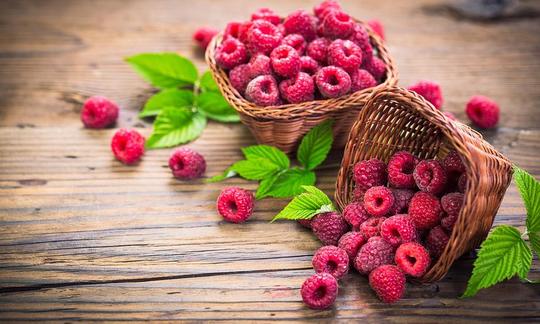

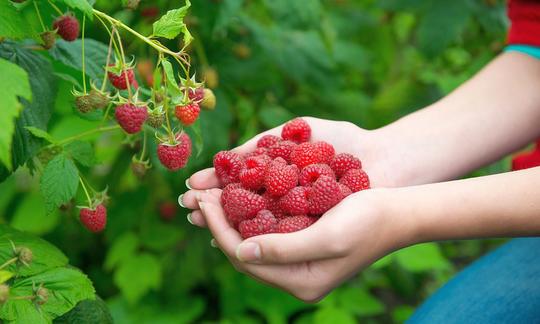

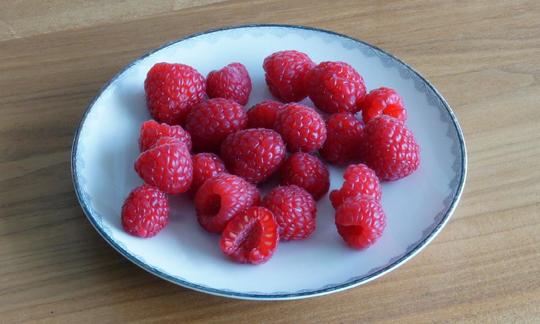

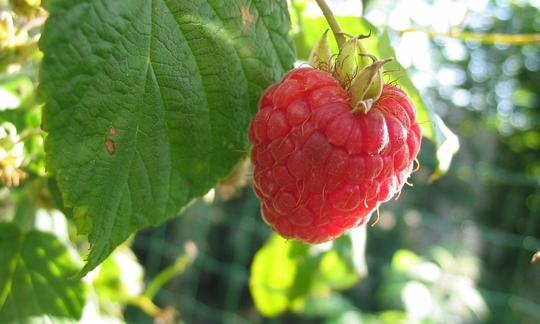

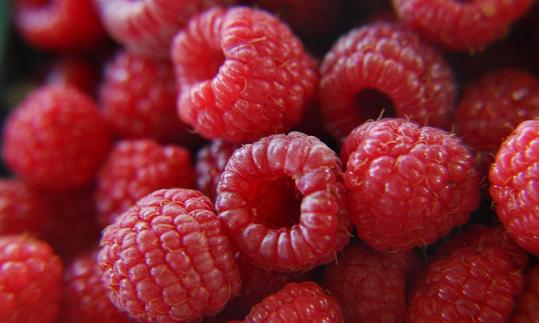

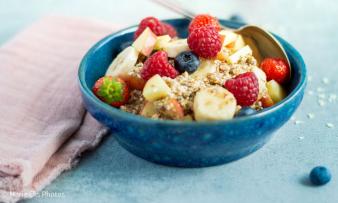
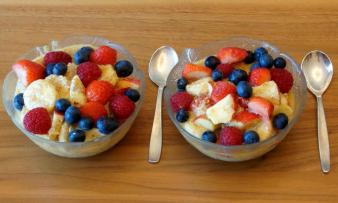






Comments